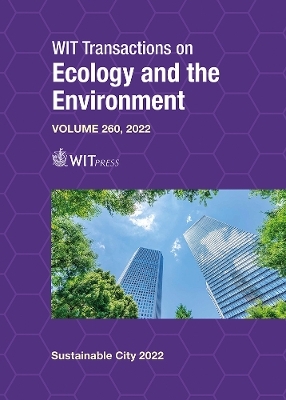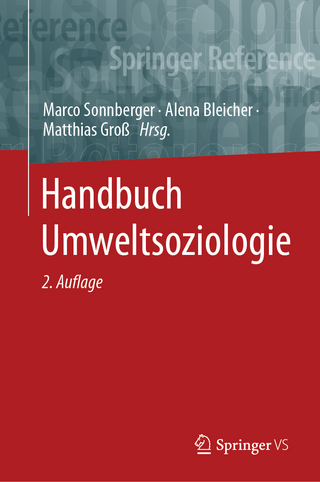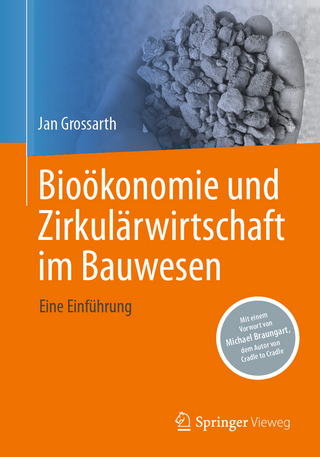
The Sustianable City XVI
WIT Press (Verlag)
978-1-78466-481-7 (ISBN)
Various aspects of the urban environment, with an emphasis on solutions leading towards sustainability, are the focus of the research contained in this volume. The included papers were presented at the 15th International Conference on Urban Regeneration and Sustainability.
The task of researchers is to improve the capacity to manage human activities, pursuing welfare and prosperity in the urban environment. Any investigation or planning in a city ought to consider the relationships between the parts and their connections with the living world. The dynamics of its networks (flows of energy-matter, people, goods, information and other resources) are fundamental for an understanding of the evolving nature of today’s cities.
Coastal areas and coastal cities are an important area covered by this book, as they have some specific features. Their strategic location facilitates transportation and the development of related activities, but this requires the existence of large ports, with the corresponding increase in maritime and road traffic and all of the inherent negative effects, and can be directly affected by the rise in sea level. This requires the development of well-planned and managed urban environments, not only for reasons of efficiency and economics but also to avoid inflicting environmental degradation that causes the deterioration of natural resources, quality of life and human health.
Urban agriculture and food sovereignty are crucial issues that are included due to their impact on city life. The scale of modern food production has created and exacerbated many vulnerabilities and the feeding of cities is now infinitely more complex. In recent years, there has been a rapid expansion in initiatives and projects exploring innovative methods and processes for sustainable food production. These projects are mainly focused on providing alternative models that shift the power back from the global food system to communities and farmers improving social cohesion, health and wellbeing. These initiatives have demonstrated that urban agriculture has the potential to transform our living environment towards ecologically sustainable and healthy cities.
Section 1: Architectural issues
Creating inclusive commercial spaces for women in Bahrain; Smart materials and adaptive building envelopes as an approach for reducing energy consumption in Egypt: A literature review; Will biophilic design become another checklist?; Classification of photovoltaics in buildings (BAPV and BIPV): Illustrated with zero-energy houses
Section 2: Environmental management
Building sustainability assessment based on materials used: Case studies in Lisbon, Portugal; Clogging of honeycomb catalysts during stove operations; Bibliographic review of water sustainability assessment in Central America; Environmental management of oil exploration in the Niger Delta towards sustainable city: The Nigeria case in Oil at My Backyard
Section 3: Planning for risk, climate change and natural hazards
Management and control tool for health emergencies in the urban environment;
Optimising stakeholder cooperation in infrastructure development; New green infrastructure for European cities: Multiple ways for improvement and climate change adaptation; Effective urban climate adaptation in the global south? Governance lessons from Lilongwe city, Malawi; Planning for natural hazards: An integrated approach into urban risk assessments – A perspective on settlements located in high-risk areas
in Maseru, Lesotho
Section 4: The community and the city
Motivation to active participation in a collective: Potentials of an emerging housing cooperative in Freiburg, Germany; Public space and environmental behaviour:
Weekly markets in Hamburg, Germany; Local creatives sustaining small communities;
Designing “clouds” for a flexible use of educational space: Research and didactic experimentation for public engagement in the post-pandemic era
Section 5: Urban transportation and planning
Exploring the link between travel behaviour and sustainable mobility; Towards sustainable urban transportation planning in developing countries: “DRT” mobile apps as a catalyst for big data-based decision support system; Beyond growth: A study on the transformation of urban renewal governance in the Southern Part of the Old City of Nanjing, China, based on the urban regime theory; Universal design approach to a smart, sustainable, safe, and accessible city for all
Section 6: Energy conversion and generation
Disposal of pyrolysis residue by incineration; Evaluation and safety assessment of biomass-/waste-generated producer gas; Composite indicators for assessing the carbon emission reduction on bio-eco-resilience of residential buildings; Recent review of energy conservation plans and targets in the Gulf Cooperation Council region: Barriers and challenges
Section 7: Urban agriculture and food sovereignty
Urban agriculture and food sovereignty in Latin America: Examples of nutritious diets;
Review of the effect of commercial farm expropriation on the food retail sector in South Africa; Current situation of stakeholders’ characteristics in Chu-mango supply chain
Section 8: City/waterfront interaction
Digital twin model for zero-energy districts: The case study of Anzio Port, Italy; Reinventing the image of cities using the element of water: International case studies of waterfront urban developments; Index of vulnerability to pollution of karstic coastal aquifers: Analysis of factors for the urban zone of Playa Del Carmen, Mexico;
Municipal coastal governance in Latvia: Non-statutory instruments for collaborative governance development
Section 9: Waste management
Municipal solid waste generation: An exploratory analysis of consumption patterns in Peru; Analysis of waste volume and type generated in O.R. Tambo district municipality, South Africa
Section 10: Cultural heritage sites
Urban morphology and industrial heritage persistence; Towards a creative sustainable future for heritage destinations: A case study of Luxor, Egypt; Environmentally responsive design in British colonial architecture within the Mediterranean basin: The case of the Presidential Palace of Cyprus; Methodological approach to incorporating Hausa traditional architecture in urban development: The case of Abuja, Nigeria;
Towards sustainable heritage conservation in Egypt: A detailed analysis for identifying the values used in selecting heritage buildings
Section 11: Urban and rural areas
Future of dwelling: Indoor plants and produce; Evolution mechanism, history and characteristics of China’s rural areas since the reform and opening-up; Sustainable habitat: Literature review and insights; Using circular economy business models and life cycle assessment to improve the sustainability of elevators
| Erscheinungsdatum | 13.12.2022 |
|---|---|
| Reihe/Serie | WIT Transactions on Ecology and the Environment ; 260 |
| Verlagsort | Southampton |
| Sprache | englisch |
| Maße | 178 x 254 mm |
| Themenwelt | Naturwissenschaften ► Biologie ► Ökologie / Naturschutz |
| Naturwissenschaften ► Geowissenschaften ► Geografie / Kartografie | |
| ISBN-10 | 1-78466-481-2 / 1784664812 |
| ISBN-13 | 978-1-78466-481-7 / 9781784664817 |
| Zustand | Neuware |
| Haben Sie eine Frage zum Produkt? |
aus dem Bereich


